Rabbits are much more than the cute, carrot-munching creatures pop culture makes them out to be. They can dig sophisticated tunnels, grow to weigh more than 20 pounds, and even eat their own poop. Here are some more facts worth knowing about the beloved mammals.
1. THEY CAN'T LIVE OFF CARROTS.

ISTOCK
Cartoons suggest that rabbits can happily survive on a diet of carrots alone. But in the wild, rabbits don’t eatroot vegetables—they’d much rather munch on greens like weeds, grasses, and clovers. That doesn’t mean you can’t give your pet some carrots as a snack from time to time, but don’t overdo it: Carrots are high in sugar and contribute to tooth decay in 11 percent of pet bunnies.
2. SOME RABBITS ARE AS BIG AS A TODDLER.
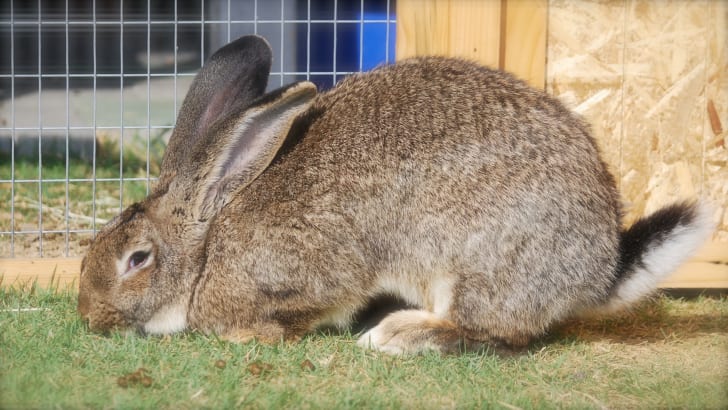
ISTOCK
Not all rabbits are cute and tiny. Some, like the Flemish giant rabbit, grow to be downright monstrous. This rabbit breed is the world's largest, reaching 2.5 feet in length and weighing up to 22 pounds. Fortunately these giants are the gentle kind, which makes them popular pets.
3. BABY RABBITS ARE CALLED KITTENS.
ADVERTISEMENT

ISTOCK
Nope, not bunnies, technically. Another word for the young is kits. Mature females are known as does while adult males are called bucks. Bunny, meanwhile, falls into the same category of cutesy terms as kitty and doggy—they're not scientific, but everyone will know what you mean.
4. THERE'S SOME TRUTH TO THE PHRASE "BREED LIKE RABBITS."
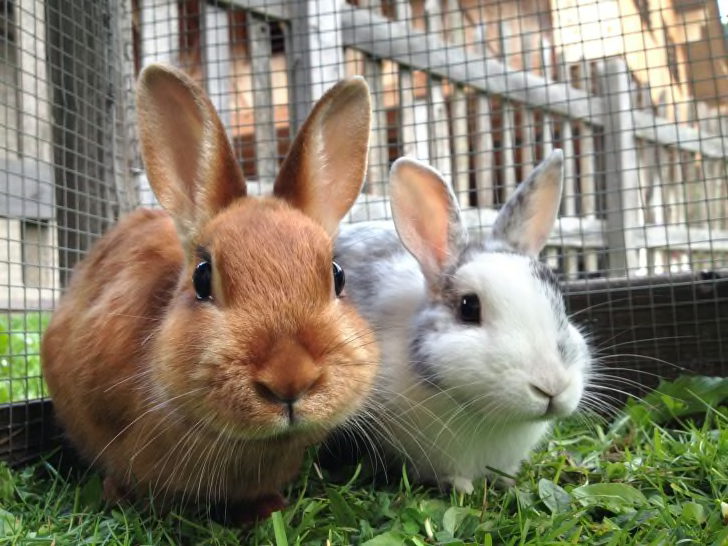
ISTOCK
Rabbits really are a busy bunch. A rabbit is ready to start breeding at just 3 to 8 months old. Once they reach that point, they can copulate eight months out of the year every year for the rest of their 9- to 12-year lifespan. A doe's reproductive system doesn't follow cycles; instead, ovulation is triggered by intercourse. After a 30-day gestation period she'll give birth to a litter of about four to 12 kits.
5. RABBITS "BINKY" WHEN THEY'RE HAPPY.
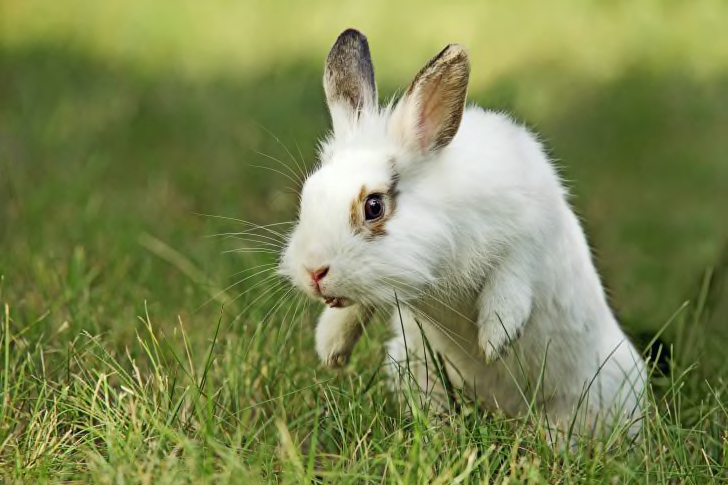
ISTOCK
If you spend enough time around rabbits, you may be lucky enough to witness one of the cutest behaviors in nature. A bunny will hop when it's happy and do a twist in mid-air. This adorable action has an equally adorable name: It's called a binky.
6. THEY EAT THEIR OWN POOP.
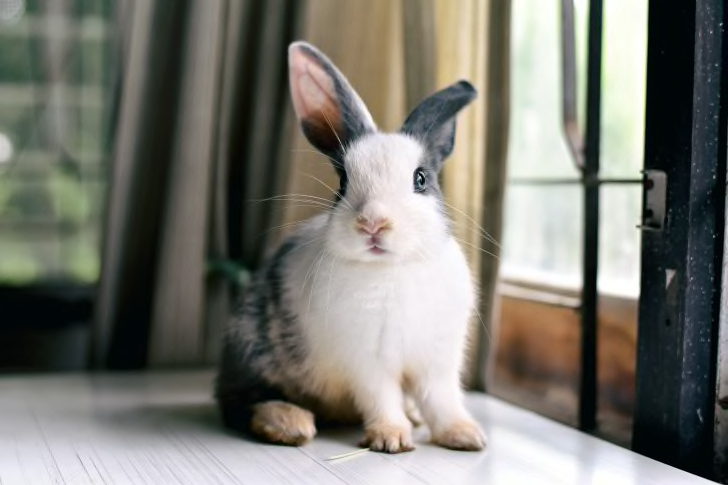
ISTOCK
One rabbit behavior that is significantly less adorable: After digesting a meal, rabbits will sometimes eat their own poop and process it a second time. It may seem gross, but droppings are actually an essential part of a rabbit's diet. They even produce a special type of poop called cecotropes that are softer than their normal pellets and meant to be eaten. Rabbits have a fast-moving digestive system, and by redigesting waste, they're able to absorb nutrients their bodies missed the first time around.
ADVERTISEMENT
7. RABBITS GROOM THEMSELVES LIKE CATS DO.
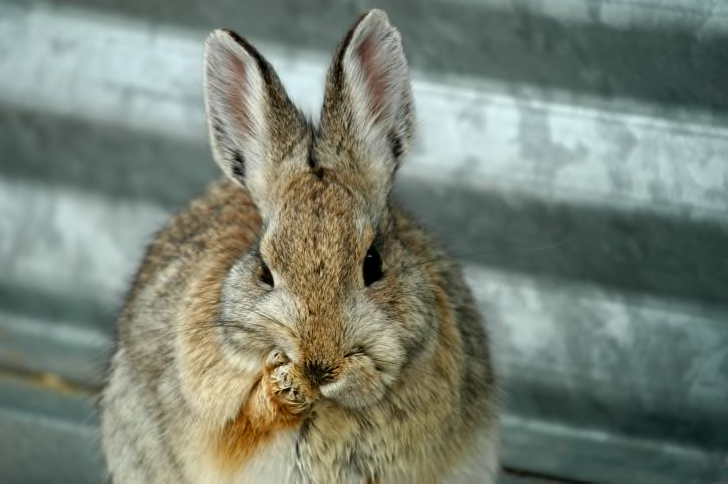
ISTOCK
Rabbits are remarkably hygienic. Like cats, they keep themselves clean throughout the day by licking their fur and paws. This means rabbits generally don't need to be bathed by their owners like some other pets.
8. THEY CAN'T VOMIT.
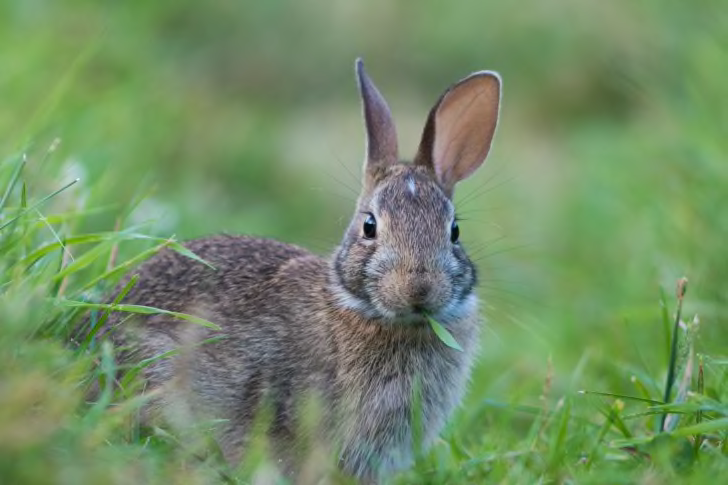
ISTOCK
While a cat can cough up a hairball after a long day of self-grooming, a rabbit cannot. The rabbit digestive system is physically incapable of moving in reverse. Instead of producing hairballs, rabbits deal with swallowed fur by eating plenty of roughage that pushes it through their digestive tract.
ADVERTISEMENT
9. THEIR VISION COVERS NEARLY 360 DEGREES.
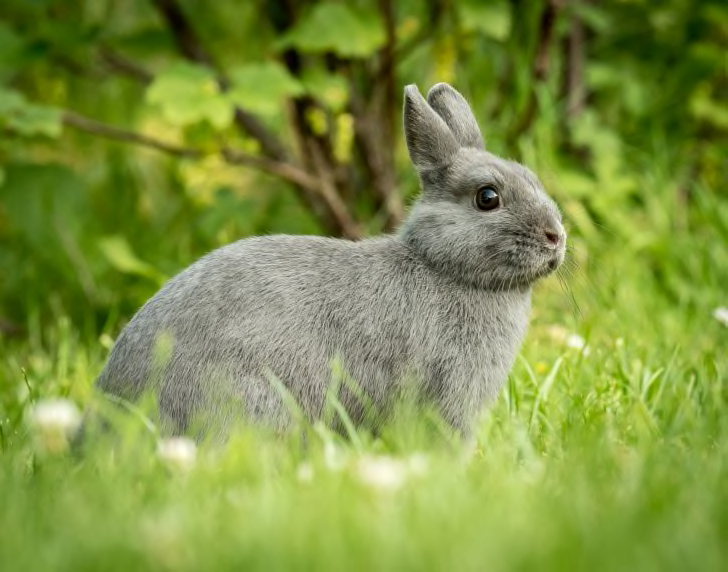
ISTOCK
It's hard to sneak up on a rabbit: Their vision covers nearly 360 degrees, which allows them to see what's coming from behind them, above them, and from the sides without turning their heads. The trade-off is that rabbits have a small blind spot directly in front of their faces.
ADVERTISEMENT
10. THEY ARE REALLY GOOD JUMPERS.
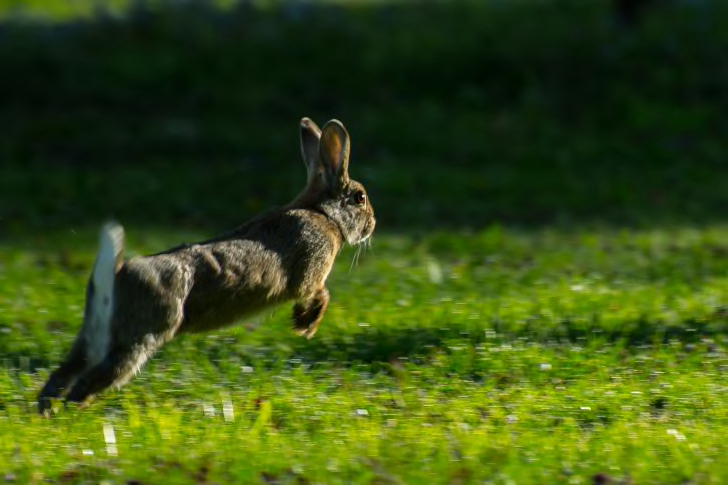
ISTOCK
Those impressive back legs aren't just for show. Rabbits are built for evading predators in a hurry, and according to Guinness World Records, the highest rabbit jump reached 3.26 feet off the ground and the farthest reached nearly 10 feet. There are even rabbit jumpingcompetitions where owners can show off their pets' agility.
11. THEIR TEETH NEVER STOP GROWING.
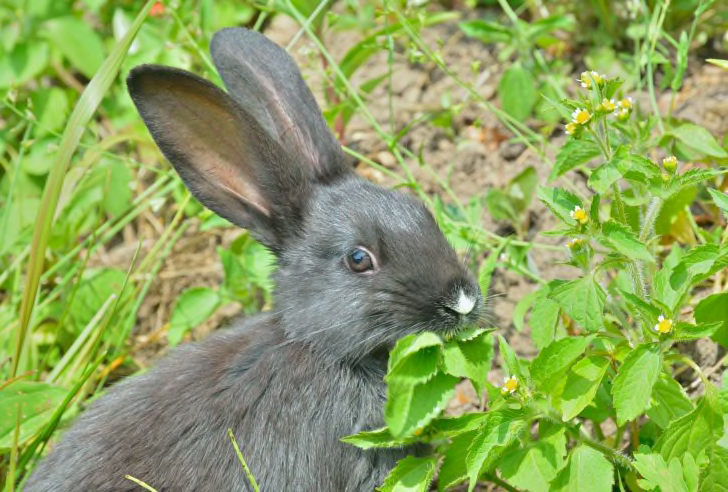
ISTOCK
Like human fingernails, a rabbit's teeth will keep growing if given the chance. A rabbit's diet in the wild includes a lot of gritty, tough-to-chew plant food that would eventually wear down a permanent set of teeth. With chompers that grow at a rate of up to 5 inches a year, any damage that's done to their teeth is quickly compensated for. The flip-side is that domestic rabbits who aren't fed abrasive foods can suffer from overgrown teeth that can make it difficult for them to eat.
12. THEY LIVE IN ELABORATE TUNNELS CALLED WARRENS.
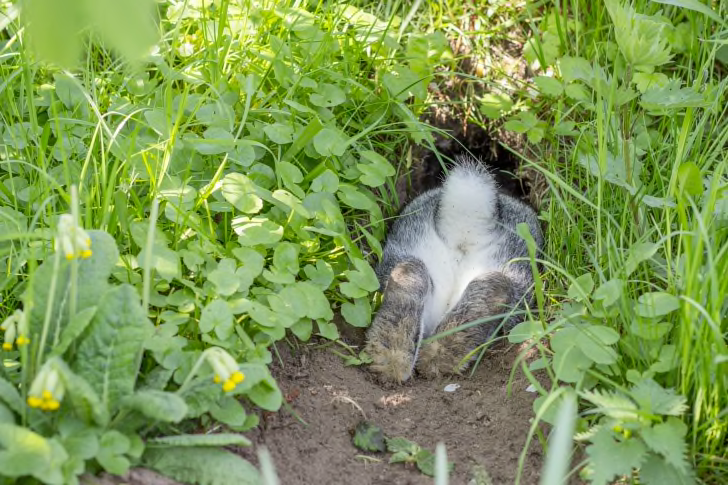
ISTOCK
Rabbits dig complex tunnel systems, called warrens, that connect special rooms reserved for things like nesting and sleeping. The dens have multiple entrances that allow the animals to escape in a pinch, and some warrens are as large as tennis courts and extend 10 feet below the surface.
13. THEIR EARS HELP THEM STAY COOL.
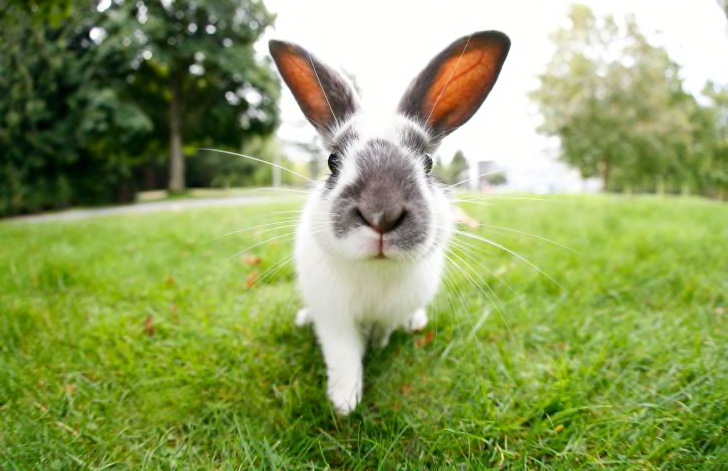
ISTOCK
A rabbit's ears serve two main purposes. The first and most obvious is hearing: Rabbits can rotate their ears 270 degrees, allowing them to detect any threats that might be approaching from close to 2 miles away. The oversized ears also have the added benefit of cooling rabbits down on a hot day. More surface area means more places for body heat to escape from.
14. THEY'RE HARD TO CATCH.
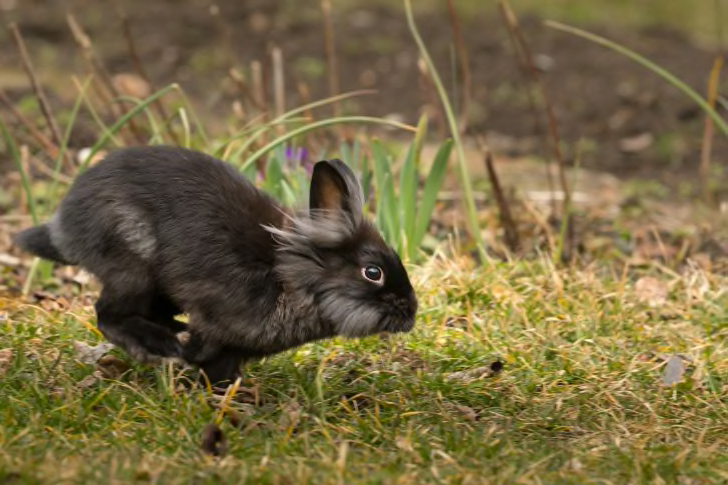
ISTOCK
If their eyes, ears, and powerful legs don't give them enough of a head start when avoiding predators, rabbits have even more tricks to rely on. The cottontail rabbit moves in a zig-zag pattern when running across an open field, making it hard to target. It also reaches a top speed of 18 mph—they really are "wascally wabbits."
Comments
Post a Comment